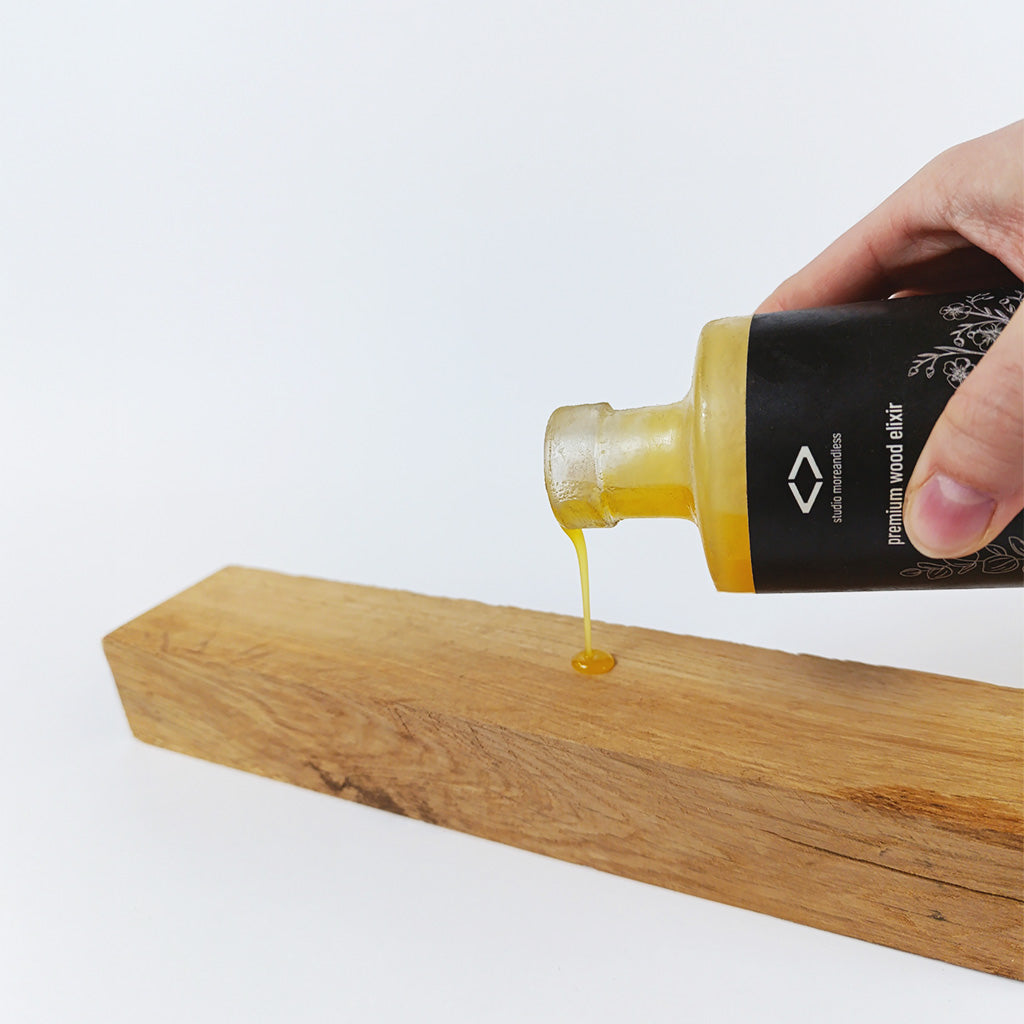
Can you pour wood oil directly onto the wood surface?
Can You Pour Wood Oil Directly Onto the Surface?
If you're serious about caring for your wood, you may have asked yourself: Can I just pour wood oil directly onto the surface?
The short answer: No, it's not the best method. In this article, you’ll find out why and how to apply wood oil properly and effectively.
Why Pouring Wood Oil Directly Isn’t Recommended
At first glance, it might seem convenient to pour the oil straight from the bottle onto the wood—but this comes with several drawbacks:
Uneven distribution:
Oil doesn’t spread evenly, which can cause some areas to absorb too much and others too little. The result? Blotchy spots and uneven coloring.
Wasted material:
Wood can only absorb a certain amount of oil. The rest just sits on the surface and often goes to waste.
Longer drying times:
A thick layer of oil takes much longer to dry—or may never dry properly at all, leaving behind a sticky finish.
How to Apply Wood Oil the Right Way
To protect your wood and create a smooth, even surface, apply oil sparingly and with precision.
1. Use the right tool
An application pad or a soft cloth is ideal for spreading the oil in a thin, even layer. The studio moreandless application pad ensures you only use as much oil as necessary.
2. Apply the oil in small amounts
Instead of pouring oil directly onto the surface, apply it to your pad or cloth first. Less is more! Use circular motions to distribute it evenly.
3. Wipe away excess oil immediately
Remove any excess oil right away with a clean, dry cloth. This prevents sticky residue and leaves you with a beautifully matte finish.
What Happens If You Apply Too Much Oil?
Using too much wood oil doesn't just affect how your surface looks—it can also cause real problems:
-
Sticky finish: Thick layers often don’t fully dry and stay tacky—attracting dust and dirt.
-
Restricted breathability: Wood is a living material that needs to absorb and release moisture. Too much oil can clog the pores and disrupt this natural process.
-
Unpleasant odors: Oil that doesn’t dry properly can go rancid and develop a bad smell.
Conclusion: Less Is More When It Comes to Wood Care
Pouring wood oil directly onto your surface may seem quick and easy—but it’s neither efficient nor sustainable.
Instead, apply the oil in small amounts with an application pad for a clean, long-lasting finish.
Our tip: Only use as much oil as the wood can actually absorb. That way, you protect your wood properly—and protect the environment, too.
Want to learn more?
Explore our high-quality, sustainable wood care products at studio moreandless and give your wood the treatment it deserves.
